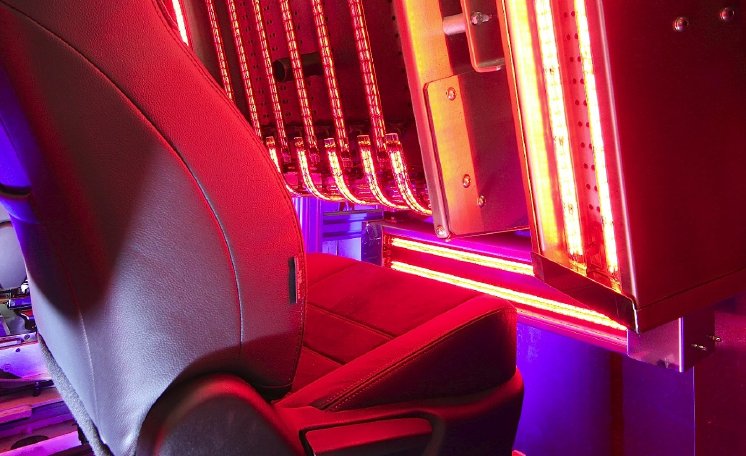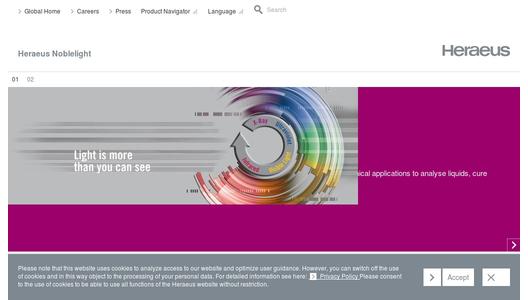- Car manufacturer Bentley ensures perfectly fitting roof liners with infrared technology
- Automotive equipment supplier Faurecia saves 35% in energy
Infrared Emitters Save Energy In the Manufacture of Car Dashboards
The dashboard of a car consists of plastic, which is formed under heat and then coated with a sound-proofing layer. Faurecia, a British company, uses carbon infrared emitters to do this, with considerable savings in time and energy. Previously, the heat had been provided by a combination of metal foil emitters and steam but this method was proving incapable of meeting the desired increased production speeds and was identified as the limiting factor in the overall production process. The plant was significantly improved by fitting carbon medium wave emitters. Carbon emitters transfer large amounts of energy very quickly, such that the company was able to dispense with the costly heating steam, which had been used for pre-heat. The components to be molded are now heated directly in their molds. As a result, the heat up rate was increased by 16% and the heating stage through-put time reduced by around 20 seconds from 60 seconds. And because there is now no need for pre-heat, energy savings come to around 9 kW/hour, giving potential energy savings of more than 35%.
Bentley: Perfect Fitting of Roof Liners Using Infrared Heating
Roof liners for Bentley cars consist of three components: a carrier fabric, an adhesive and a decorative leather facing piece. Ideally, this combined structure should maintain its integrity for the life of the vehicle. When Bentley introduced a new adhesive, which allows a 5-fold increase in the bond strength of the materials being joined, then they had to look for a suitable heat source, as the new adhesive needed to be heated to an activation temperature of 65°C to maintain the process stage cycle time. The solution to the problem was provided by a custom-built, trim-handling system incorporating infrared emitters. Here, the carrier fabric is first sprayed with adhesive and the leather cladding is precisely fixed in a vacuum press. The infrared system then brings the adhesive up to the required 65°C in less than three minutes. In practice, two custom-built infrared systems have been installed, one for the Bentley Continental 4-door model and one for the 2-door version, to help ensure that the roof liners are a perfect fit, both when new and throughout the life of the vehicle.
Background: Infrared In Automotive Manufacture
Infrared systems are the basis of many heating processes in modern automotive manufacture. Today, infrared emitters from Heraeus Noblelight are used in the manufacture of at least 200 car parts. Many car parts are made in plastic such as chrome-plated inner cladding, cut-to-shape carpets, airbag housings and steering wheel caps, roof linings, glove boxes, decorative strips or shock absorbers. And the infrared solutions for the required heating process are individual to these many applications. But they all have one thing in common. The infrared systems are precisely matched to both the product and the process, saving energy, cost and time. If the process is known precisely, then quality can be improved and energy saved. New developments and intelligent infrared systems lead to optimized process solutions, especially when working with plastics.


